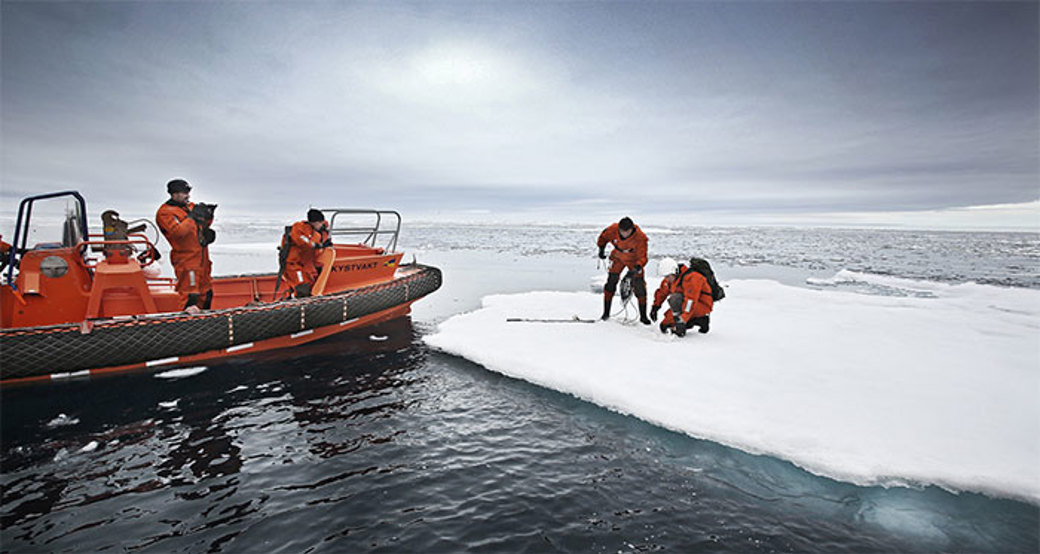
Monitoring extreme conditions
How big is an iceberg and how fast does it move? KONGSBERG is developing technology that can give you the answer.
The ice cold North is burning hot. The oil companies are eager to exploit the area that probably hides one-fourth of the world's undiscovered black gold. But the forces of nature rule in this attractive part of the planet. Deep water, ice, freezing temperatures and strong winds. This means that the advanced technology to be used must meet extremely high standards.
Drift ice and huge icebergs are a serious threat to petroleum operations and the people engaged in them. Through the innovation project SensIs, KONGSBERG is helping to develop a system that can measure the size of an iceberg, and tell how fast it is moving.
The goal is to develop a system in the High North to monitor ice and ocean currents using sensors on the seabed.
"This is an exciting project for KONGSBERG. The system will better equip the oil companies to assess risks and avoid having ice run into rigs or vessels. For example, when drilling for oil, it will sometimes be important to stop drilling and pull up the drill string to avoid dangerous situations. The oil companies will get a better overview of ice conditions, enabling them to reduce the number of production stops."
Arild Brevik, Product Sales Manager
Extreme technology
The Arctic project SensIs will measure ice using a network of KONGSBERG's wireless sensors placed on the seabed. As long as one knows the depth from the sensor up to the ocean surface, audio signals can be transmitted from the sensor on the seafloor to the surface, measuring the exact time of the echo. If the echo comes back more quickly than before, the researchers know that the thickness of the ice has increased.

But SensIs is far from the only innovative project KONGSBERG has in the High North. For years, the Group has been a key player in the North: Advanced sensors monitor the seabed and the water columns. Satellite and surveillance technology monitor the Earth from pole to pole. Systems for integrated environmental monitoring are also an important target area.
This type of technology is highly decisive in the struggle for, and the management of natural resources in the High North. With all its natural resources, the High North is a central arena for political games and power struggles.
Monitoring and collecting important data

Precisely as part of the Norwegian government's management of these attractive areas, former Minister of Foreign Affairs Jonas Gahr Støre (Labour) established the prestigious project "BarentsWatch", an information system for the High North featuring data from about 30 public players. KONGSBERG delivers the technical framework that coordinates the system.

BarentsWatch is described as a milestone for the Norwegian Government's efforts and management of the High North. There has been significant interest in the BarentsWatch project at the national and international levels alike. For example, the Finnish president and the Australian and New Zealand authorities have asked for briefings on the system.

BarentsWatch
The goal is to develop a comprehensive information and monitoring system for the northern coastal and sea regions.
Collects data from 27 governmental units and research institutions.
Generates real time and historical data for the following fields:
- Climate / environment
- Marine resources
- Maritime activitiesI
- Oil / gas activities
- Maritime law / regulations
Will provide an overview and a more comprehensive basic data for management of the area.
Priority target groups:
- Public institutions in charge of the different fields involved
- Commercial users